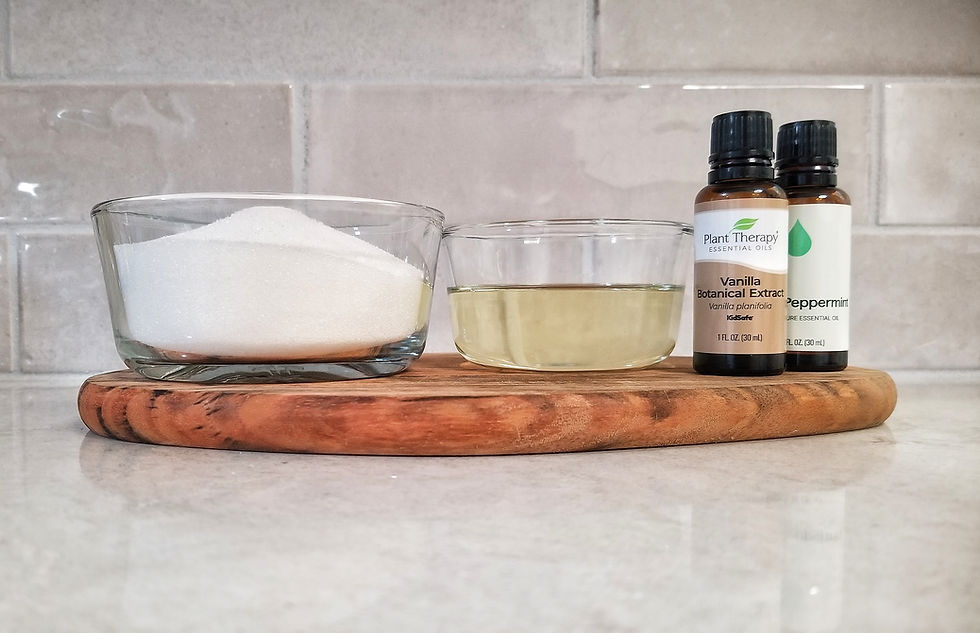Herbal Foraging Journal
- Jean McCabe
- Aug 14
- 4 min read

A Chronicle of Wild Gatherings and Green Discoveries
Venturing into the woods, fields, and meadows, the herbal forager embarks on a journey both ancient and ever renewed. Each step, each careful observation, connects the seeker of wild plants to generations of healers and wanderers who have sought wisdom from the untamed places of the earth. This log is meant to be a companion on such journeys—a living record of the plants gathered, the earth’s shifting moods, and the lessons learned along the way. It is as much a tool for practical documentation as it is a celebration of the intimate dialogue between humans and plant. Each entry is an invitation to look closer, to wonder, and to remember that the landscape is alive with gifts for those who learn its language.
How to Use This Journal
This journal is organized to encourage both methodical record-keeping and reflective storytelling. For each foraging excursion, document the practical details—date, location, weather, and the plants encountered—as well as notes on uses and insights gained. Over time, the journal will reveal patterns: the habits of the seasons, the return of favorite species, and the deepening knowledge of wild medicine.
Sample Entry
Date: August 8, 2025
Location: Willow Creek Meadow, edge of oak forest, north field
Weather: Clear skies, gentle breeze, 22°C
Plants Found: Yarrow (Achillea millefolium), Wild Mint (Mentha arvensis), Red Clover (Trifolium pratense), Plantain (Plantago major)
Uses:
Yarrow – wound healing, fever reduction, digestive aid
Wild Mint – digestive support, cooling tea, insect repellent
Red Clover – blood purifier, cough remedy, edible flowers
Plantain – topical relief for bites and stings, anti-inflammatory, edible leaves
Picture or sketch: This is great to have for future foraging trips
Notes: The meadow is vibrant after last week’s rain. Found yarrow flowering abundantly near the stream’s bend—harvested sparingly, leaving many for pollinators. Mint lines the wetter edges, sending its aroma into the air with every step. Red clover blossoms are denser than last month, their magenta heads nodding between swathes of grass. Plantain’s broad leaves are at their peak, glossy and green. Sat awhile under the old oak, listening to the wind, feeling gratitude for the abundance of medicine growing wild.
Journal Template
For each outing, fill in the sections below:
Date:
Location:
Weather:
Plants Found:
Uses:
Notes:
Picture or sketch:
Common Herbs to Seek
Yarrow (Achillea millefolium): Found in meadows and along roadsides; feathery leaves and clustered white flowers. Traditionally used for wounds and fevers.
Dandelion (Taraxacum officinale): Ubiquitous in fields and lawns; every part edible. Supports liver, digestion, and is a nutritious green.
Chickweed (Stellaria media): Prefers shady, moist soil; small white star-like flowers. Cooling, soothing for skin irritations, and edible in salads.
Red Clover (Trifolium pratense): Common in open meadows; sweet, magenta flower heads. Used as a blood purifier and gentle expectorant for coughs.
Plantain (Plantago major): Grows in compacted soil, pathways, and lawns; broad or lance-shaped leaves. Topical for bites and stings, edible leaves, anti-inflammatory.
St. John’s Wort (Hypericum perforatum): Recognizable by its yellow flowers; blooms around midsummer. Used for mood support and topical oil for bruises.
Wild Mint (Mentha arvensis): Found near water; intensely aromatic leaves. Digestive tea, culinary use, and insect repellent.
Mugwort (Artemisia vulgaris): Prefers disturbed ground; silver-backed leaves, tall stems. Digestive aid, dreamwork, and smudging herb.
Safety and Sustainability Guidelines
Positively identify every plant before harvesting. Many edible and medicinal plants have toxic lookalikes. Use multiple field guides and, when unsure, consult an expert.
Harvest ethically: Take only what you need, never gather more than a third of any stand, and leave plenty for wildlife and regeneration.
Harvest away from pollution: Avoid roadsides, areas treated with pesticides, and contaminated water sources.
Respect private property and local laws: Obtain permission and check regulations regarding foraging in parks or protected areas.
Document changes in the environment: Note signs of drought, abundance, pollution, or ecological succession—these details are valuable for future foragers.
Seasonal Reflections
Spring emerges with tender shoots and the first dandelion rosettes. Nettles and violets push through soft earth, eager for the sun. Summer brings a riot of growth: yarrow and red clover blossoms, fields fill with the scent of wild mint, and the tall stalks of mullein catch the golden light. Autumn, quieter and earthier, offers roots and seeds—burdock, chicory, and late-season berries—reminders of the subterranean world. Even winter, when most greenery sleeps, rewards the attentive with rose hips, pine needles and tree barks, sources of vitamin C and warming teas.
Personal Narratives and Observations
The most memorable foraging days are as much about the journey as the harvest. Perhaps you recall the early morning mist beading on the leaves, the birdsong echoing across the meadow, or the unexpected discovery of a patch of wild violets nestled in the shade. Use this section to record thoughts, questions, and insights—how the landscape changes with the seasons, how your senses sharpen with each outing, and how your understanding of the interconnectedness of life deepens.
Resources and Further Reading
Peterson Field Guide to Medicinal Plants and Herbs by Steven Foster & James A. Duke
Botany in a Day by Thomas J. Elpel
The Forager’s Harvest by Samuel Thayer
Wild Remedies by Rosalee de la Forêt & Emily Han
National Audubon Society Field Guide to North American Wildflowers
Closing Thoughts
An herbal foraging journal is more than a ledger—it's a testament to presence and curiosity. As you fill its pages, celebrate both the humble and the extraordinary, and let each entry remind you that the green world is a patient teacher. May your journeys be fruitful, your heart open, and your hands ever gentle in the harvest.




Comments